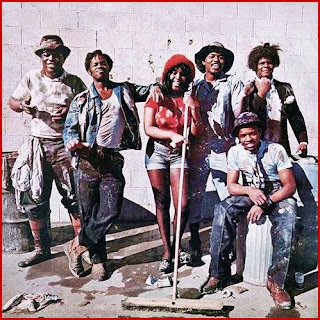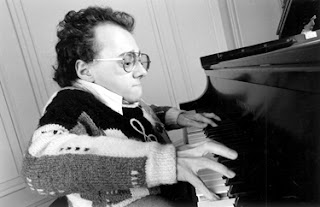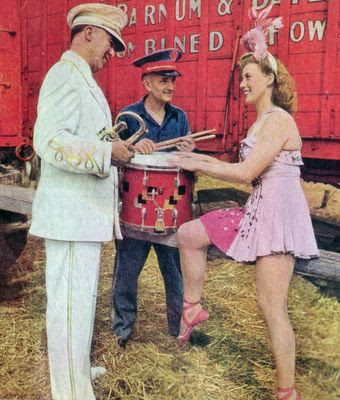Johnnie Mae Matthews (December 31, 1922 – January 6,
2002) was an American blues and R&B singer, songwriter, and record producer
from Bessemer, Alabama. Known as the “Godmother of Detroit Soul” and as the
first African American female to own and operate her own record label (Northern
Recording Company) she was an early influence on the careers of many of the
now-famous recording stars who began their careers in Detroit, Michigan such as
Otis Williams, David Ruffin, and Richard Street of the Temptations, Jimmy
Ruffin, Berry Gordy, founder of Motown Records, Timmy Shaw, Barbara Lewis,
Bettye LaVette and many more.
 Matthews learned to sing in her church choir, and also
performed with her mother at military bases throughout the Deep South. When she
was twelve years old, the family relocated to New Jersey, and in 1947 Matthews
left her parents home and moved to Detroit, Michigan where she married and
started her own family. In 1957 she joined a local quintet called the Five
Dapps, assuming lead vocals on "You're So Unfaithful," which was the
B-side of their 1958 debut single, "Do Wop a Do". The Instrumental backing
on the record was done by pianist Joe Hunter, who would frequently collaborate
with Matthews in the years to follow, and later led Motown's famed studio band,
the Funk Brothers.
Matthews learned to sing in her church choir, and also
performed with her mother at military bases throughout the Deep South. When she
was twelve years old, the family relocated to New Jersey, and in 1947 Matthews
left her parents home and moved to Detroit, Michigan where she married and
started her own family. In 1957 she joined a local quintet called the Five
Dapps, assuming lead vocals on "You're So Unfaithful," which was the
B-side of their 1958 debut single, "Do Wop a Do". The Instrumental backing
on the record was done by pianist Joe Hunter, who would frequently collaborate
with Matthews in the years to follow, and later led Motown's famed studio band,
the Funk Brothers.
In 1958, Matthews formed her own record label, dubbed the
“Northern Recording Company”. Headquartered in an office at 2608 Blaine in
Detroit, just a few blocks from her home, she used $85 borrowed from her
husband's paycheck to become the first African-American woman to own and
operate her own label. With sessions typically recorded at either nearby
“Special Studio” or at radio station WCHB, Northern Recording Company was
largely used as a vehicle to launch her own solo recording career. Her first
release, "Dreamer", in 1959, was credited to “Johnnie Mae Matthews
& the Daps”. Her follow-up single, "Mr. Fine", featured on its
B-side, a song named "Someday", which was a solo tune by local singer
Chet Oliver.
Motown Records founder, Berry Gordy has often credited
Matthews with teaching him the ropes of the recording industry. He acknowledged
her assistance in helping land a distribution deal with “Chess Records” for
“The Miracles” 1959 hit "Bad Girl". It's impossible to know how
differently Matthews' own recording career might have turned out had she
accepted any of invitations of Berry Gordy to record for Motown, particularly
during the mid-'60s, when she was delivering some of her finest material, most
notably "Lonely You'll Be" and "Cut Me Loose," in 1967, the
latter of which was subsequently licensed for national distribution on the Atco
Records label
In her 1960 tune, "So Lonely," Matthews dropped
the Dapps altogether. She then, quickly followed up with her second
solo, "Ooh Wee Baby." On both of these recordings she was backed by a band called the “Groovers”, a group that was led by Joe Hunter, and also included bassist James Jamerson, guitarist Eddie Willis, saxophonist Eli Fontaine, and drummer Uriel Jones, all of who would become staples of Motown's greatest sessions as members of the, now famous, Funk Brothers Band.
solo, "Ooh Wee Baby." On both of these recordings she was backed by a band called the “Groovers”, a group that was led by Joe Hunter, and also included bassist James Jamerson, guitarist Eddie Willis, saxophonist Eli Fontaine, and drummer Uriel Jones, all of who would become staples of Motown's greatest sessions as members of the, now famous, Funk Brothers Band.
Also in 1960 the label issued "Come On," the
debut single by “The Distants” who were later renamed “The Temptations”. In
time, Northern spun off a series of sister labels, most notably “Reel”, which
was the label of several of Ms. Matthews’ singles, such as "Oh,
Baby", "No One Can Love Me the Way You Do", "The
Headshrinker", and "Come Home", all of which were released in 1961.
In 1963 she hired manager Ollie McLaughlin, who had
previously launched the career of “Barbara Lewis”. McLaughlin brought Matthews
to the attention of Mercury Records’ new Blue Rock subsidiary, where he
eventually produced both of her singles for that label, "Baby, What's
Wrong", and "My Man (The Sweetest Man in the World)".
 During the
late '60s Matthews also cut a series of excellent singles for her “Big Hit”
label, including "I Have No Choice", "My Momma Didn't Lie",
and "Don't Be Discouraged"
During the
late '60s Matthews also cut a series of excellent singles for her “Big Hit”
label, including "I Have No Choice", "My Momma Didn't Lie",
and "Don't Be Discouraged"
 During the
late '60s Matthews also cut a series of excellent singles for her “Big Hit”
label, including "I Have No Choice", "My Momma Didn't Lie",
and "Don't Be Discouraged"
During the
late '60s Matthews also cut a series of excellent singles for her “Big Hit”
label, including "I Have No Choice", "My Momma Didn't Lie",
and "Don't Be Discouraged"
However, as the
decade of the sixties came to a close, so did Northern Recording Company and
all of her subsidiaries, and as the 1970s were being ushered in, Matthews
turned her attention to “Black Nasty” an up and coming funk group that featured
two of her children, Artwell and Aubrey. In 1973, Matthews produced the band's
only album, “Talking to the People”, which was released on the “Stax” record
label.
“Black Nasty” was later renamed “The ADC Band” and the
group resurfaced in 1978 with the R&B smash "Long Stroke".
Encouraged by their success, Matthews revived Northern Recording Company around
this time, with the ADC Band supplying the musical backing on the
disco-inspired tune "It's Good", which was later re-issued on the
“Cotillion Records” label for national distribution. After one final Northern
effort, 1980s "I Can Feel It," she closed the label for good,
effectively ending her recording career.
Matthews died after a long bout with cancer on January 6, 2002. She was 79 years old. (Edited from Wikipedia)
Matthews died after a long bout with cancer on January 6, 2002. She was 79 years old. (Edited from Wikipedia)
















































